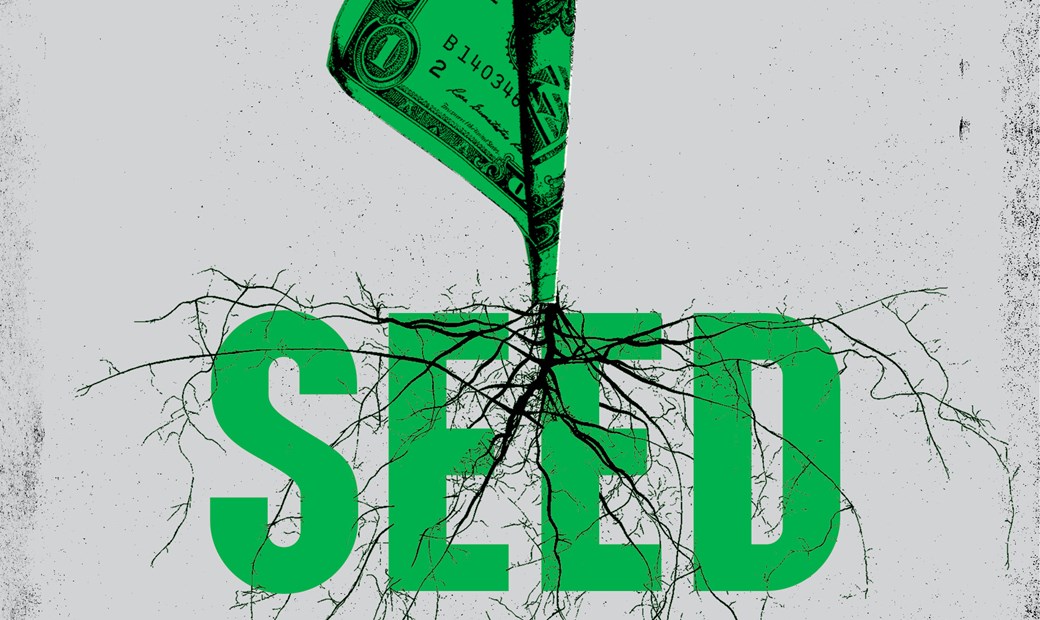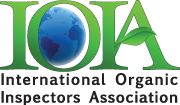Monsanto's sordid historical legacy
In Seed Money: Monsanto's Past and Our Food Future, Bartow J. Elmore reveals another side of the story: the company’s products weren't designed to feed the world but rather to create more opportunities to sell even more ag inputs.

Until it was gobbled up by Bayer in 2018, Monsanto was among the most reviled companies in corporate America, targeted by anti-GMO and seed sovereignty activists, sued by people exposed to its chemicals, and exposed for bullying regulators, battling farmers and betraying science.
Monsanto, of course, never saw it that way and it justified its actions, and the entire regime of toxic agrochemicals, genetically modified seeds, and fertilizers, by claiming to "feed the world," a mantra we hear even today. But in Seed Money: Monsanto's Past and Our Food Future, Bartow J. Elmore reveals another side of the story: the company’s products weren't designed to feed the world but rather to create more opportunities to sell even more ag inputs. Ironically, even the problems arising from widespread use of its products spawned fresh business opportunities.
The most recent example of this was dicamba, an herbicide reformulated to be used with genetically modified seeds and to take down weeds that had become resistant to Monsanto’s former blockbuster weedkiller, Roundup. The only problem: Dicamba was prone to drift, causing losses on millions of acres among farmers who did not or could not grow crops resistant to the herbicide. It led to a major jury verdict against Monsanto brought by a Missouri peach tree-farmer whose fruit trees withered as a result of the volatile pesticide sprayed by his neighbors. Yet dicamba continues to be sold, so far with the EPA's approval, despite lawsuits, objections, and the bitter conflicts it has spawned in farm country.
Those who have followed the news about Monsanto over the years would be excused for wondering whether there was more to mine from this story of corporate malfeasance. It turns out there was—a motherlode, in fact. Elmore, an environmental and business historian at Ohio State University, focuses on the roots of Monsanto's chemical empire that go back a century. What he finds is not unlike the controversy that embroils the remnants of the company today. It has had repeated incidents of employee poisonings, multiple environmental cleanups from Idaho to West Virginia, suits on myriad fronts, and a toxic legacy measured not just by numbers of workers or towns poisoned, but also by an entire nation, Vietnam, which is still dealing with the multigenerational birth deformities arising from the defoliant Agent Orange.
While some of these stories are well known, many are not. For example, Elmore deftly bypasses the recent widespread reporting around cases of non-Hodgkin's lymphoma associated with Monsanto's Roundup herbicide, which have led to multimillion-dollar jury verdicts against the company, focusing instead on a less well-known body of toxic torts. And while Elmore takes pains to understand the kind of internal altruism the company relies on to rationalize its products, one wonders whether the historical narrative he lays out is actually evidence of a troubled corporate culture which its new parent Bayer continues to pay for to this day.
The story begins in the early 20th century, when Monsanto — the maiden name of founder John Queeny's wife — got its start with saccharin, an artificial sweetener that was cheaper than sugar. Producing it along with caffeine, the company found a major client in Coca-Cola.
At the time, many chemicals and medicines, such as aspirin and novocain, were derived from coal tar, a waste product from coal mines. Salt mines, a source of chlorine, and sulphur pits, for sulphuric acid, also became pipelines of raw materials. Rock phosphate was another, which was converted with extremely high heat into phosphorus, used in everything from laundry detergents to fire retardants. Monsanto, in what Elmore calls "scavenger capitalism," tapped these mines for raw materials not unlike oil companies drilling into the ground.
By the 1930s, Monsanto had moved into petrochemicals and PCBs, which became an essential insulator and fire retardant for electrical transformers. They also were used in paint, paper, plastics, and food packaging. It wasn't until the 1960s that researchers found that PCBs were toxic and widespread, detected in everything from birds to breast milk.
After Monsanto officials became aware that PCBs were an environmental and toxic hazard, one company researcher said the studies "will be repeated to arrive at better conclusions" — an approach that occurs time and again when it comes to unfavorable scientific results. Even as the pressure over PCBs mounted, Monsanto officials vowed to not be "defensive or apologetic" and to "sell the hell out of them as long as we can."
That approach lasted until the 1970s, when the company came up with a better solution. It offloaded liability for PCBs to its customers, like General Electric, which thought they were essential to its electrical business. GE was left holding the bill from PCB contamination of the Hudson River in New York, which came to $1.7 billion.
If PCBs were one pillar of Monsanto's business, another was agrochemicals, producing herbicides like the potent 2,4,5-T, which later was used in the infamous defoliant, Agent Orange, during the war in Vietnam. Widely sprayed, it spawned a multitude of long-lasting maladies in that country and among American servicemen. These risks weren't only evident in Vietnam's war zone. They were present in the small town of Nitro, West Virginia, where workers had suffered the ill effects of the herbicide decades earlier.
Starting in the 1930s, workers producing 2,4,5-T experienced skin lesions which can only be described as grotesque. Monsanto's solution was a shower and change of clothes after work. But the problems persisted and it wasn't until the 1950s that the culprit was identified as dioxin, which Dow Chemical called "the most toxic compound they have ever experienced."
As Elmore writes, "If the Nitro plant had been shut down and its problems exposed to the public in the late 1950s, the toxic hazards of 2,4,5-T might never have been exported to Vietnam. There, half a world away, hundreds of thousands of American soldiers and Vietnamese citizens would soon come to know about dioxin's dangers." Although Nitro workers sued Monsanto, they didn't prevail, and the company tried to seize their homes to cover attorney fees. A judge blocked the attempt. Decades later, Monsanto faced another lawsuit calling on the company to monitor the health of Nitro's residents and clean up the site. In 2012, it settled for $93 million.
By the 1970s, the two pillars of Monsanto's business—PCBs and 2,4,5-T—were eroding, so it found a third one, glyphosate, the key ingredient of Roundup. It was produced from Monsanto's rock phosphate mine in Idaho, which itself became an EPA Superfund site due to radioactive waste and chemicals leaching into the surrounding environment. Glyphosate grew into a multibillion-dollar product, one that when twinned with herbicide-resistant genetically engineered cotton, soy, and corn seeds, led to widespread adoption of these crops.
While overall pesticide use initially declined after GMOs were adopted in the 1990s, the decline was short lived. As glyphosate-resistant weeds evolved, farmers resorted to spraying more herbicides. The company responded by turning back to older powerful herbicides, such as volatile dicamba, spawning a new wave of lawsuits. They came just as the cancer-related glyphosate claims began to make headway in the courts.
One might excuse the company, if all of its efforts did indeed "feed the world." But Elmore cites a bevy of evidence from the National Academies of Sciences and the USDA that the yield gains from the use of genetically modified crops were no better than for farmers who avoided them.
With that conclusion, one might think Elmore counts himself an anti-GMO activist, but he isn't, mentioning the promise of gene-editing techniques such as CRISPR. Rather he's critical of the way genetic engineering played out within the confines of Monsanto's vision, a critique that in the end is far more powerful.
This article came from Food and Environment Reporting Network, an excellent organization that deserves your support! All the links in this article lead to the supporting FERN articles.
